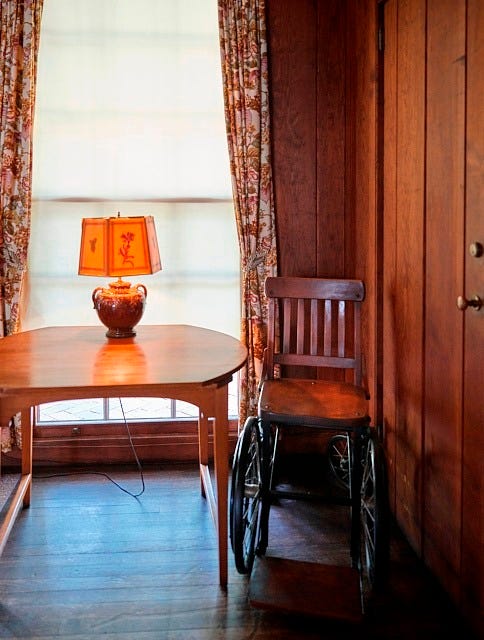WASHINGTON, D.C. — The mood was upbeat as a new year began at the White House. Yes, the harsh effects of the Great Depression still lingered, but a strong recovery was under way. The man who had reimagined the role of the federal government in order to help Americans survive the calamity would begin a second term in three weeks.
The last day of 1936 was busy for President Franklin Delano Roosevelt. Visitors to the Oval Office included members of Congress, the chairman of the Federal Reserve Board and two ambassadors.
The president, 54 years old, was in “the best of health,” according to his physician.
“His hair is a little grayer, but he wears a healthy tan and is down to a weight in the 180’s [that] Captain Ross. T. McIntire, naval physician at the White House, regards as ideal,” reported the Associated Press.
Nothing had deterred Roosevelt, including polio, which crippled him at the age of 39. Despite a valiant effort to recover the use of his legs, he was unable to walk without aid and wore braces weighing up to 30 pounds. FDR was confined to a wheelchair in private. But with the help of men who orchestrated his movements and a sympathetic press corps, his physical handicap was concealed in public settings.
By the end of 1936, the 6-foot-2 president stood tall in the eyes of many Americans, even if he struggled to rise from a chair and couldn’t take more than a few steps.
From the outset of his campaign in early 1936, FDR was not only confident — a Roosevelt quality — he was all but certain of his reelection.
“We will win easily, but we are going to make it a crusade,” he told his cabinet.
There was a strong case for a crusade. Since the darkest days of the Great Depression the economy had rebounded with a vengeance: national income and the stock market were way up, there were millions of new jobs, and unemployment had dropped significantly from its peak of nearly 25 percent.
A poll in Fortune magazine offered a glimpse of the national mood: More than half of Americans thought the Great Depression was over. The president’s approval rating was at least 60 percent.
FDR’s Republican rival for the White House was Governor Alfred Landon of Kansas, a fiscal conservative.
“Landon’s greatest advantage was that he was not Herbert Hoover,” FDR biographer Jean Edward Smith wrote. “His liability (aside from Roosevelt’s immense popularity) was his blandness.”
Americans went to the polls on Tuesday, November 3, 1936. Nearly 61 percent of voters cast their ballots for Roosevelt.
It was a landslide victory of historic proportions. The Electoral College had rarely been so one-sided. FDR carried 46 states, collecting 523 electoral votes. Governor Landon was victorious in Maine and Vermont, totaling eight electoral votes.
President Roosevelt kept his administration intact. He was superstitious, Smith wrote, so he would stay the course with his cabinet members. (He also disliked letting people go.) Nor would there be any changes to the president’s White House staff, except for the absence of longtime advisor Louis Howe, who had died in April.
It would be business as usual, and business had been good.
On New Year’s Eve FDR spent a quiet evening with family. He retired at 2 a.m.
The scene in Times Square was far different. More than 400,000 people crammed Manhattan streets to celebrate New Year’s Eve. Sixteen hundred policemen on foot and horseback attempted to maintain order as the white globe with “1937” on it dropped from the Times Building.
The boisterous crowd looked good and spent freely, according to The New York Times, the “best dressed” for New Year’s Eve since 1929.
Money and alcohol flowed at clubs, restaurants, theaters and hotels. Champagne, the drink of choice, sold for $4 to $20 a quart.
Seventeen hundred all-night permits were issued to businesses for what turned out to be a wild night and early morning. Tens of thousands of people went to movie theaters, some with continuous showings until 7 a.m. on New Year’s Day.
For at least one celebration in one city, money was plentiful and spirits were high as people said goodbye or good riddance to 1936. Happy days were here again, or so it seemed.
Start at the beginning of The 1937 Flood Journal or access the archives.
FRIED BOLOGNA: Family Stories from the American Midwest and Upland South Join me for stories about my ancestors who lived, worked and traveled in the hills and along the rivers of Arkansas, Illinois, Indiana, Iowa, Missouri and beyond.







I can't imagine the scene in Times Square! The $20 for a quart of champagne is, in today's currency, about $450...that is insane! And the fact that movie theaters showed films continously through the night is so awesome! I love how you weave historical facts and moments like this into the narrative.